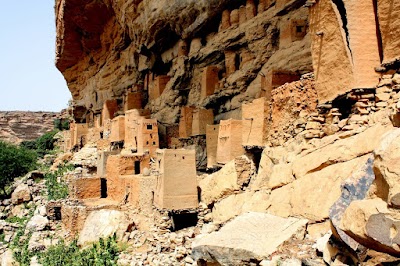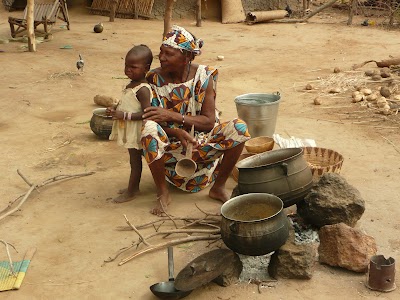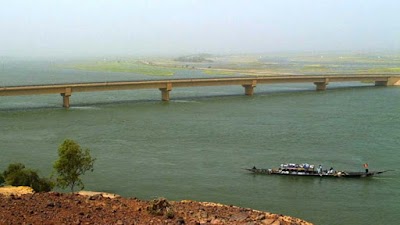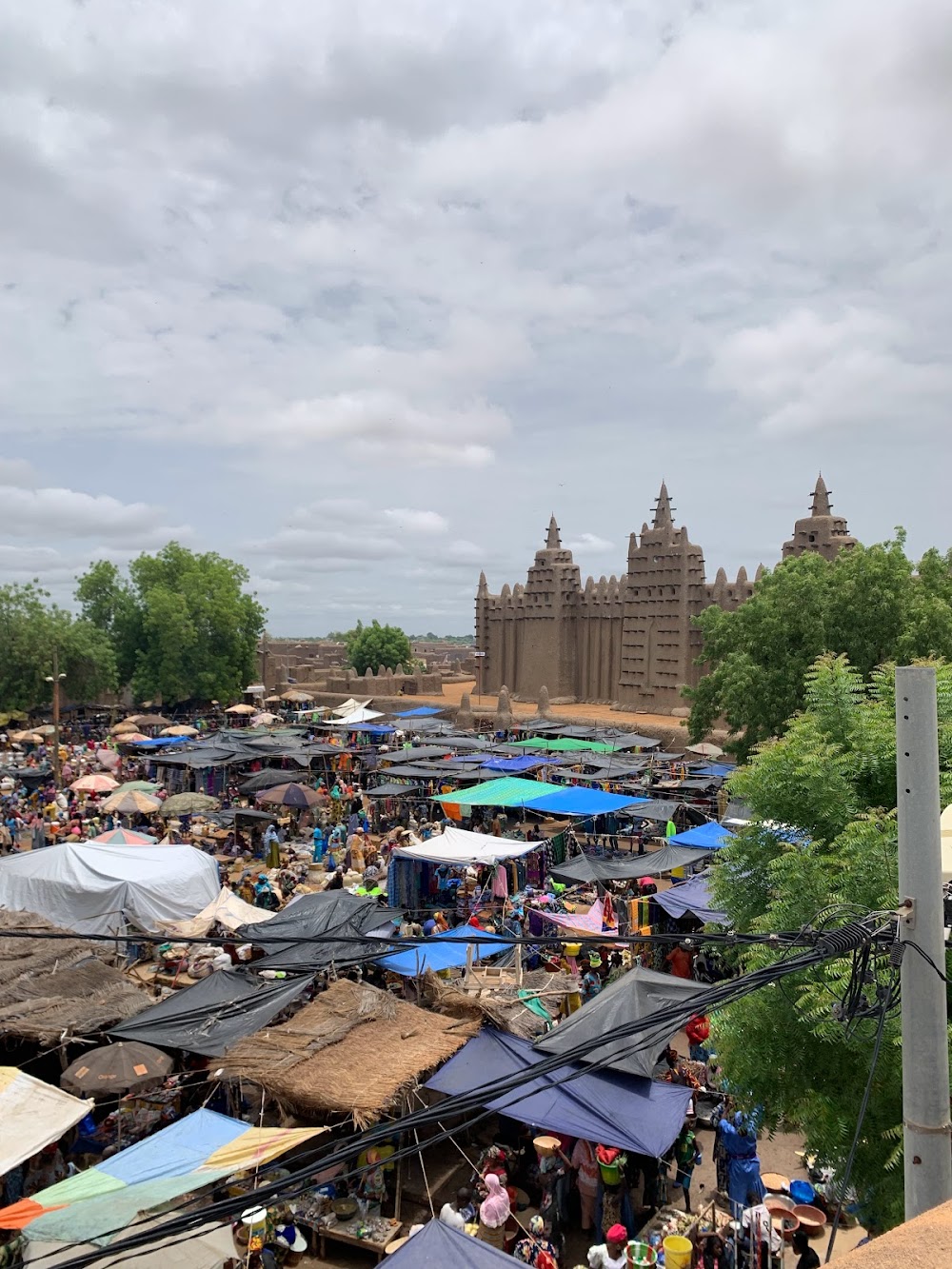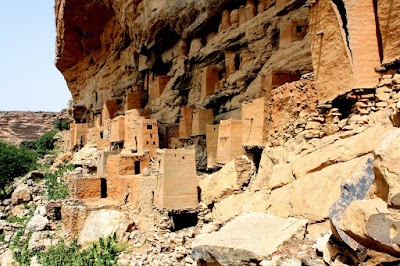Falaise de Bandiagara (Falaise de Bandiagara)
Overview
Discovering Falaise de Bandiagara
Falaise de Bandiagara, located in the Koulikoro Region of Mali, is a breathtaking natural and cultural wonder that beckons travelers with its stunning landscapes and rich heritage of the Dogon people. This striking sandstone cliff stretches nearly 150 kilometers, rising majestically above the arid plains. The impressive vertical walls and lush plateaus create a captivating visual contrast, making the escarpment not only a geological marvel but also a testament to millennia of human habitation and cultural evolution.
The Dogon People and Their Heritage
The history of Falaise de Bandiagara is deeply intertwined with the Dogon people, an ethnic group celebrated for their unique cultural practices and intricate cosmology. The Dogon settled in this region around the 14th century, seeking refuge in the natural fortresses provided by the cliffs from Islamic invaders. Their villages, often perched precariously on the edges of the escarpment or nestled within its caves, showcase remarkable architectural ingenuity. With mud-brick houses, granaries, and Togu Na (men's meeting houses) that harmoniously blend into the rugged landscape, these settlements reflect a deep connection to their environment.
Adapting to Nature
Visitors to Falaise de Bandiagara will be captivated by the Dogon's resourceful adaptations to their challenging terrain. The cliffs serve as a canvas for their agricultural practices, where terraces are meticulously carved into the rock face to cultivate millet and other crops. The steep cliffs and narrow pathways require careful navigation, adding an adventurous element to any visit. Moreover, the region is renowned for its traditional masked dances, performed during various Dogon ceremonies and festivals, where each mask and dance movement conveys significant symbolism tied to Dogon mythology and ancestral spirits.
A UNESCO World Heritage Site
Globally recognized for its cultural significance, Falaise de Bandiagara was designated a UNESCO World Heritage Site in 1989, underscoring its value as a cultural and historical treasure. This site acts as a living museum, where ancient traditions remain vibrantly alive, providing a rare glimpse into an enduring way of life that has persisted for centuries. The UNESCO designation plays a crucial role in protecting the cultural heritage of the Dogon and promoting sustainable tourism that respects and preserves their traditions.
Rich Cultural Treasures
The Falaise de Bandiagara is home to a wealth of intriguing facts. The area is particularly renowned for its rich oral history, often recounted by griots—traditional storytellers who serve as custodians of the Dogon’s collective memory. Additionally, ancient rock art can be found throughout the cliffs, depicting various aspects of Dogon life and beliefs. Of particular interest are the Tellem caves, which predate the Dogon’s arrival. These caves, situated high on the cliff faces, were used for burial and storage by the Tellem people, who mysteriously vanished long before the Dogon settled in the area.
Adventure Awaits
For adventurous tourists, numerous trekking routes along the escarpment provide options ranging from moderate hikes to more challenging climbs, each offering unparalleled views of the landscape and intimate encounters with Dogon villages and culture. Local guides, often members of the Dogon community, provide invaluable insights and ensure respectful interactions. For a truly immersive experience, overnight stays in guesthouses within Dogon villages are available, allowing for a deeper understanding and appreciation of the Dogon way of life.
Optimal Visiting Conditions
The best time to visit the Falaise de Bandiagara is during the dry season, from November to February, when the weather is cooler and the paths are more accessible. Regardless of when you visit, be prepared for rugged conditions by packing sturdy footwear, sun protection, and sufficient water for hydration. It’s also essential to respect local customs and practice ecological sensitivity to help preserve the pristine nature of this extraordinary location.
A Unforgettable Experience
In conclusion, Falaise de Bandiagara is much more than a geographical landmark; it embodies a confluence of natural beauty, historical significance, and vibrant culture. For travelers seeking an authentic cultural experience and the opportunity to explore one of West Africa’s most awe-inspiring landscapes, a visit to Falaise de Bandiagara promises to be truly unforgettable.


